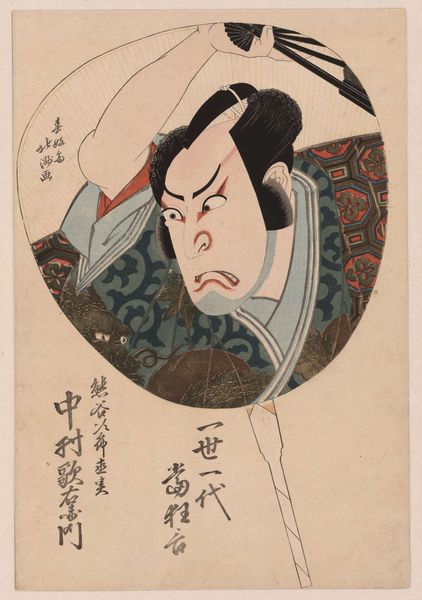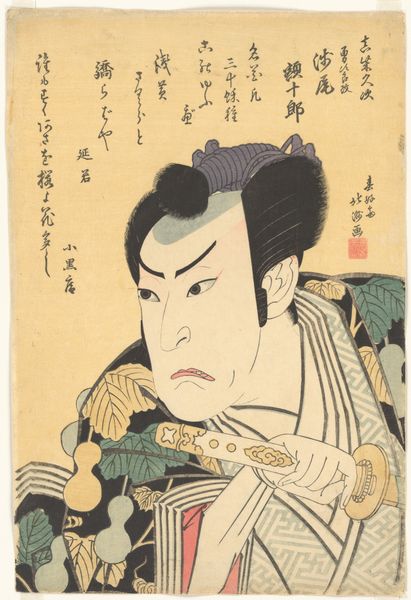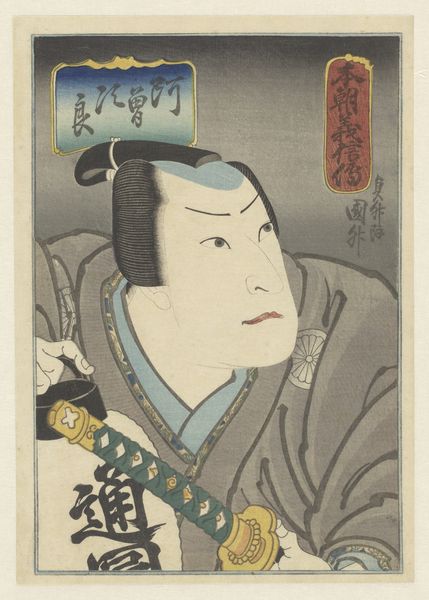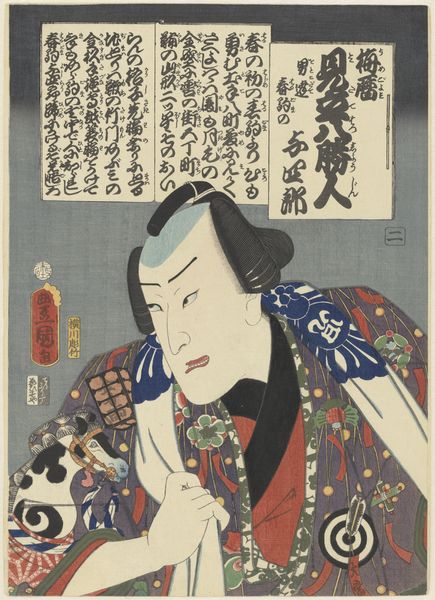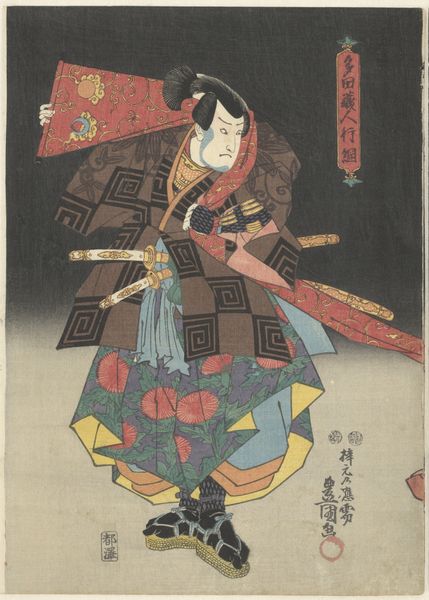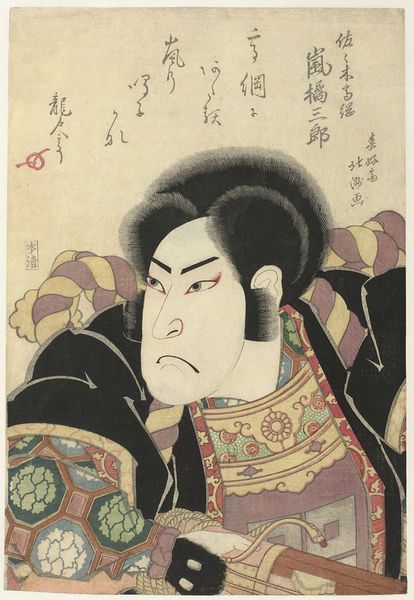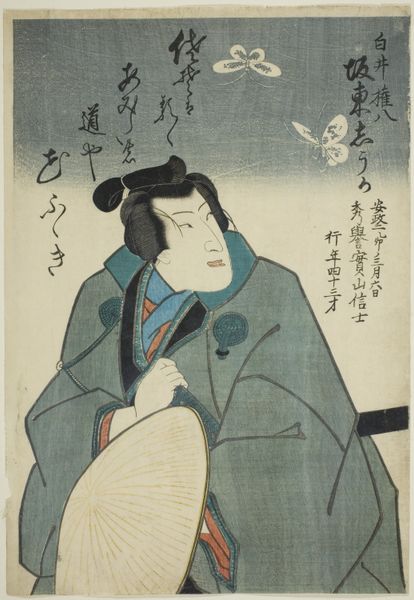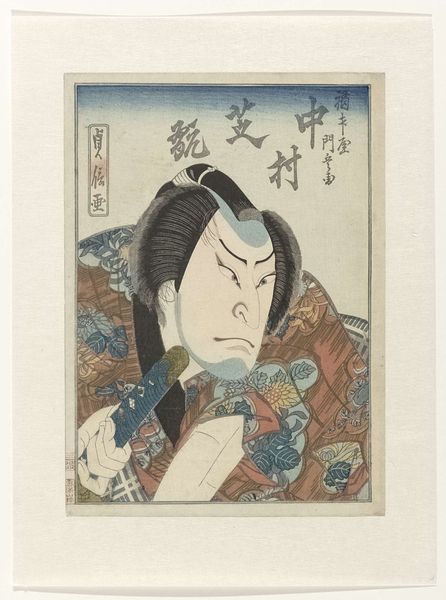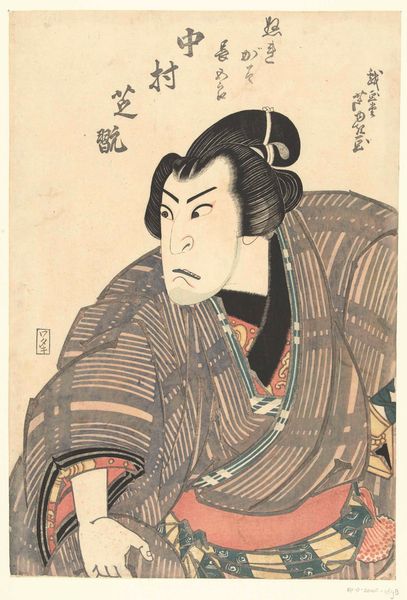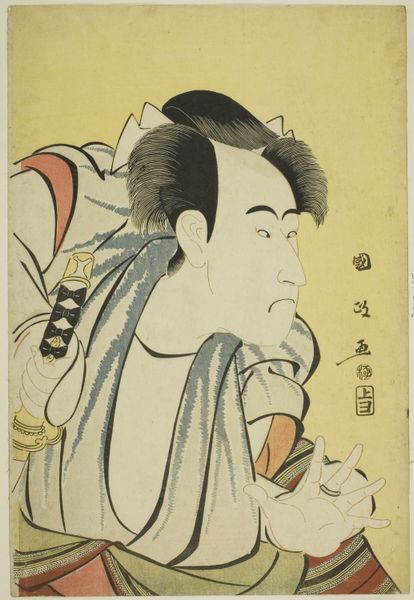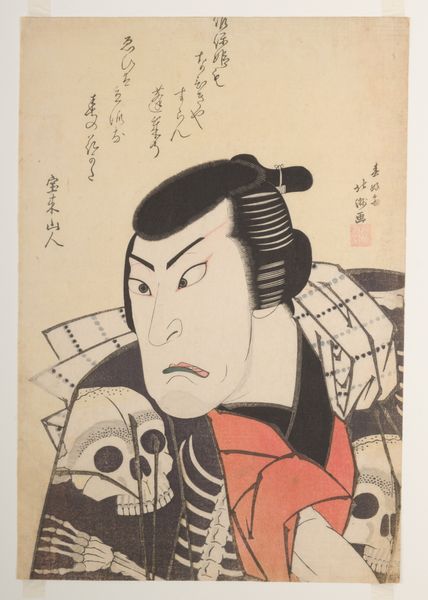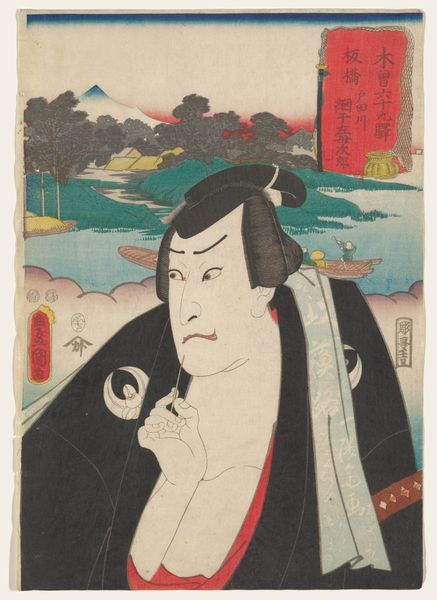
Kabuki Actor Nakamura Utaemon III as the Sword Master Kyōgoku Takumi, from the series Issei ichidai atari Kyōgen (Hits of a Lifetime of Kyōgen) 1825
0:00
0:00
print, woodblock-print
#
portrait
# print
#
caricature
#
asian-art
#
caricature
#
ukiyo-e
#
woodblock-print
#
men
#
watercolour illustration
Dimensions: Vertical ōban; Image: 15 × 10 1/8 in. (38.1 × 25.7 cm)
Copyright: Public Domain
Curator: This striking image is a woodblock print created around 1825 by Shunkosai Hokushu. It's titled "Kabuki Actor Nakamura Utaemon III as the Sword Master Kyogoku Takumi, from the series Issei ichidai atari Kyogen." The piece resides here at The Met. Editor: The immediate impression is one of concentrated intensity—the stark lines of the face, framed by that intense black wig, seem to vibrate with controlled anger. It's dramatic, even confrontational. Curator: Indeed. Consider how Hokushu manipulates line and color here. Notice the sharp contrast between the black of the costume and hair, and the pale, almost mask-like face. The background's soft gradient emphasizes the subject. It's all tightly composed within that circle. Editor: But that face is doing so much work. It carries a weight of performance tradition. The exaggerated makeup, the tense jaw... this is about codified emotion, almost a mask imbued with cultural meaning, isn't it? Kabuki demands specific symbolic displays. Curator: Precisely! And this connects directly to Utaemon's fame within Kabuki theater. His role as the swordsman highlights the popular themes of duty and honor in this type of theatrical performance. Look at the sword’s meticulously rendered handle as he tightly grips it; even the most minute details receive a heightened significance in this scene. Editor: The image certainly transmits more than individual anger. A symbol here may act like an element in a sentence. Is it perhaps referencing a whole universe of established stories and moral teachings by merely presenting one specific role in a distinct visual language? Curator: Without question. The print collapses many things at once. On one level it commemorates the fame of a celebrated actor and, on another, presents Kabuki traditions more broadly. The work exists as both portrait and emblem. Editor: To conclude, Hokushu's skill transforms a simple portrait into a doorway that presents historical, performative, and cultural insight. Curator: Well said! Its formal design certainly creates and bolsters those meaningful qualities you mention.
Comments
No comments
Be the first to comment and join the conversation on the ultimate creative platform.
